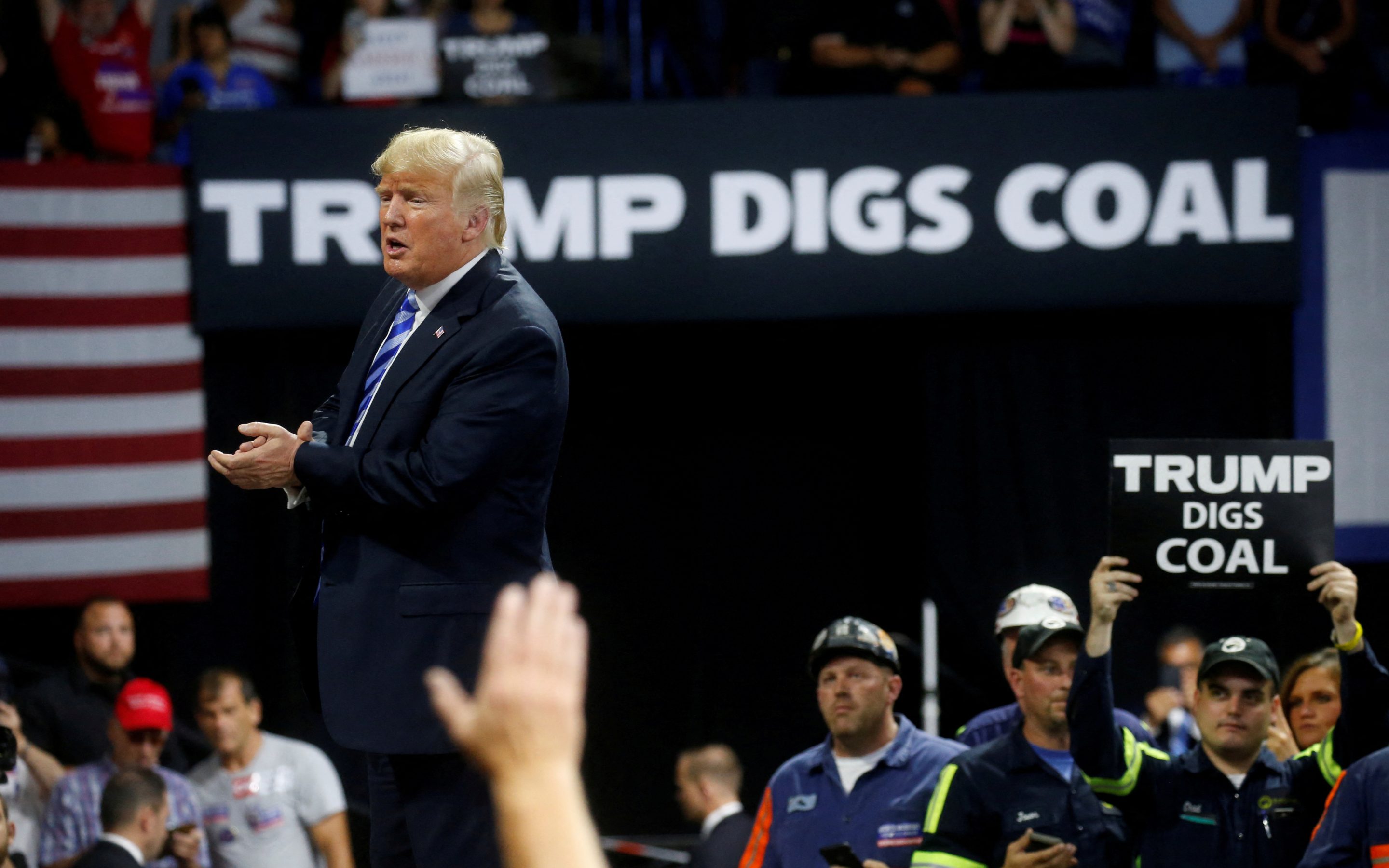Environmental Policy Brief #183 | Charles Sweeney | October 13, 2025
In a move that has startled climate scientists and energy economists alike, the Trump administration recently unveiled a sweeping new initiative aimed at reviving America’s coalindustry—a sector long regarded as both an economic relic and a climate catastrophe. The plan, a mix of subsidies, deregulation, and export promotion, represents a dramatic reversal of the Biden-era shift toward renewable energy and the most significant policy intervention in favor of coal since the early 2000s.
At its core, the initiative seeks to achieve three things: restore federal price subsidies for coal producers, delay the scheduled closure of aging coal plants, and provide federal support to expand coal exports to global markets. To its proponents, the plan is a bid to bring economic life back to struggling mining towns across Appalachia and the Midwest. To its critics, it’s a dangerous political maneuver that risks undoing decades of progress toward global climate goals.
The Return of the Dirtiest Fuel
Coal, long known as the dirtiest fossil fuel, holds a notorious place in the climate ledger. According to the Intergovernmental Panel on Climate Change (IPCC), coal alone has contributed nearly 1.62°F to 2.2°F rise in global average temperature since the Industrial Revolution began. Per unit of energy,coal releases more than twice as much carbon dioxide as natural gas, and its combustion produces additional pollutants—mercury, sulfur dioxide, and fine particulate matter—that directly harm human health.
Scientists warn that any resurgence in coal use will have far-reaching environmental consequences: deeper droughts, more intense hurricanes, and longer, deadlier heatwaves. The global climate system, already strained by accelerating emissions from transportation and agriculture, can ill afford a large-scale return to coal.
Climate and energy analysts describe the issue with fossil fuels, coal in particular, as “ a feedbackloop,” where the burning of more coal means more heat, which means higher energy demand forcooling, which then fuels the argument for more cheap power—often from coal again.
Deregulation by Design
The administration’s new coal plan leans heavily on deregulation. It repeals key parts of the Obama-era Clean Power Plan, replacing them with the more lenient Affordable Clean Energy (ACE) rule. The ACE rule reduces federal oversight over several toxic byproducts of coal burning, including coal ash disposal, mercury emissions, and methane leakage. These changes effectively weaken safeguardsdesigned to protect both the atmosphere and the water tables in coal-producing regions.
Environmental advocates warn that this rollback could result in elevated levels of mercury inwaterways and an increase in airborne particulates— both linked to respiratory illness and developmental issues in children.
Meanwhile, the new regulatory framework allows utilities to extend the lifespan of inefficient coalplants that were previously slated for retirement.
While deregulation may ease short-term costs for plant operators, experts note that it does little toaddress coal’s fundamental problem: it is no longer competitive. Even without strict regulations, renewable energy— particularly wind and solar—remains cheaper in most markets. The decision to double down on coal, then, appears driven less by economics and more by politics.
A Political Play with Global Stakes
Coal country remains a vital part of Trump’s political base. Once the backbone of American industrial might, many of these regions have suffered steep job losses and population decline asmines shuttered and automation reduced labor demand. By positioning himself as coal’s last champion, Trump is appealing to a demographic that feels left behind in the energy transition.
But global energy trends tell a different story. Despite rising demand for electricity—fueled by artificial intelligence, data centers, and electrification—most industrialized nations are investing in renewables and nuclear power rather than coal. China, the world’s largest coal consumer, hasindeed built new coal plants, but even there, the long-term trajectory points toward cleaner sources.
In the U.S., the connection between rising energy demand and new fossil fuel investment hasbecome especially visible through the lens of artificial intelligence. Mega-projects such as Project Stargate (a partnership between OpenAI, SoftBank, and Oracle), xAI’s Colossus in Tennessee, and Meta’s Hyperion in Louisiana have all required immense, reliable power sources. Yet even theseenergy-hungry facilities are turning to natural gas and nuclear power—sources that, while not carbon-free, are cleaner than coal.
An Uncertain Future for Energy Transition
The administration argues that coal could help stabilize electricity costs amid growing strain on thenational grid. But experts warn that subsidizing coal risks diverting billions from investments in renewable infrastructure and transmission lines that could deliver cheaper, cleaner energy in the long run.
A recent example underscores this concern: in July 2025, the Department of Energy canceled a $4.9 billion loan guarantee for the Grain Belt Express, an 800-mile transmission line designed to carry Kansas wind power to Illinois and Indiana. The project—shorter than similar ones already built in China—fell victim to political opposition from rural landowners and Republican lawmakers. For many climate advocates, the withdrawal signaled a broader retreat from renewable ambition.
The scientific verdict remains clear: a renewed embrace of coal will almost certainly slow, if not reverse, U.S. progress toward the emission-reduction targets established under the Paris Climate Accord. While the administration frames its coal initiative as an energy security measure, it may in fact deepen America’s dependence on outdated technologies—and lock in decades of additional carbon emissions.
In an age defined by climate volatility, Trump’s coal revival looks less like an energy policy and more like a bet against the planet’s future.

